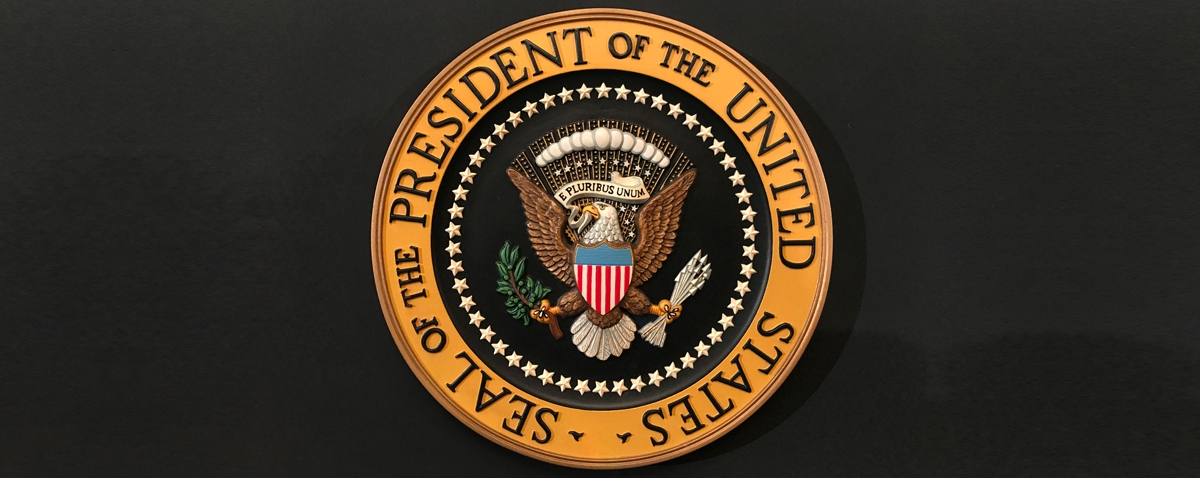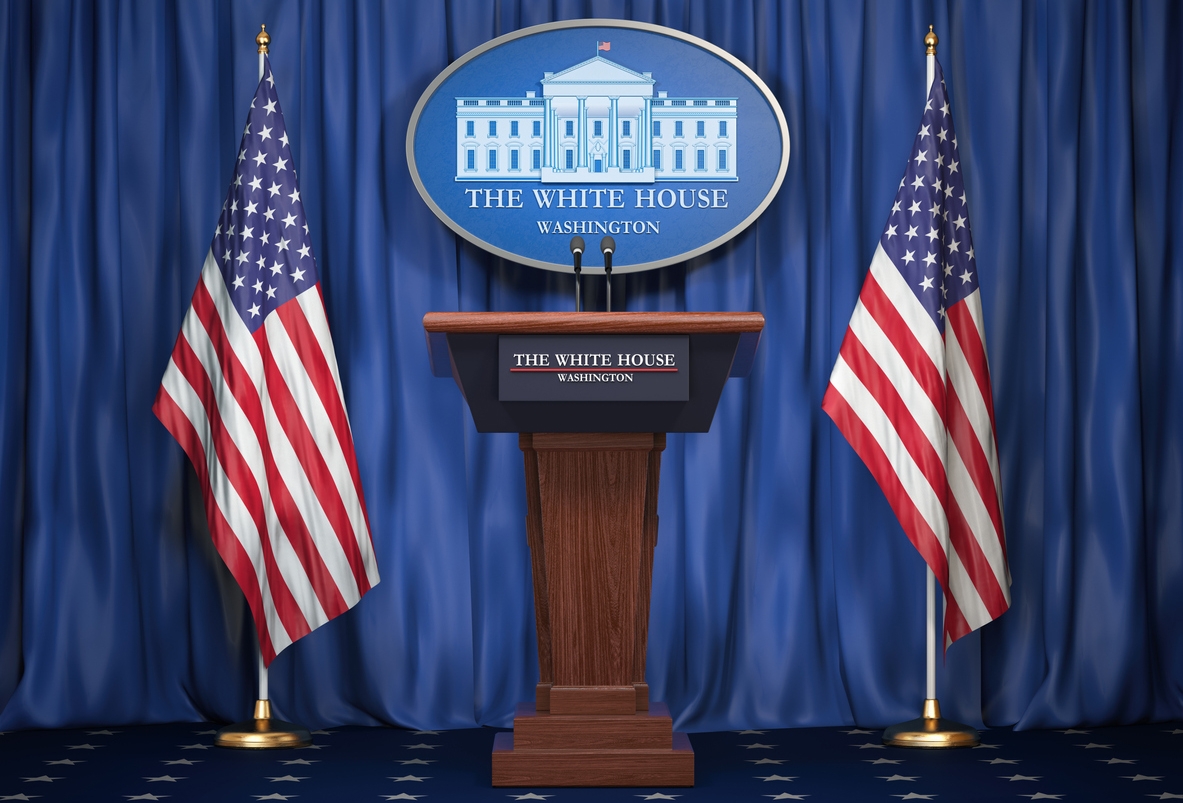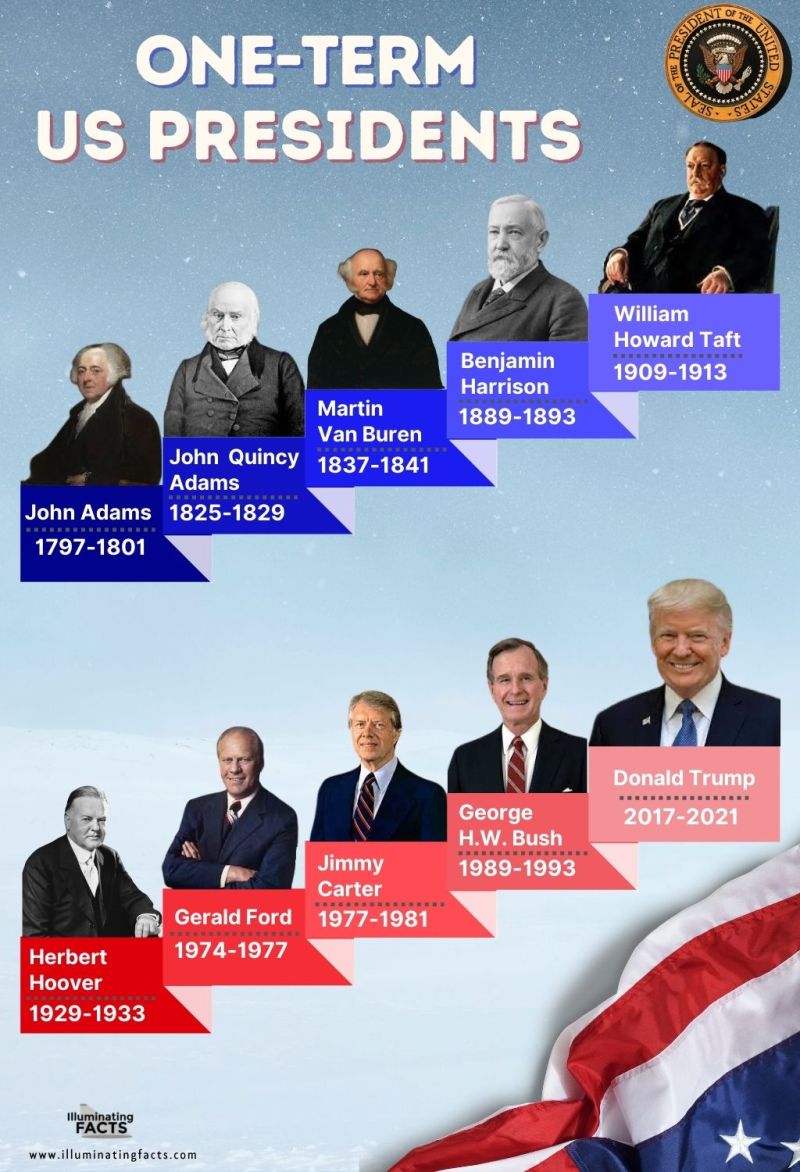Background
In many countries that have parliamentary forms of government, the office of the president or head of state is mainly ceremonial. But it is different in the United States as the president is bestowed with great authority and is perhaps the most powerful elected official in the world. The Founding Fathers of the United States decided that one elected civilian, the U.S. president, would be the leader of the executive branch of the federal government. It is a governmental structure that has remained in place for over 200 years.
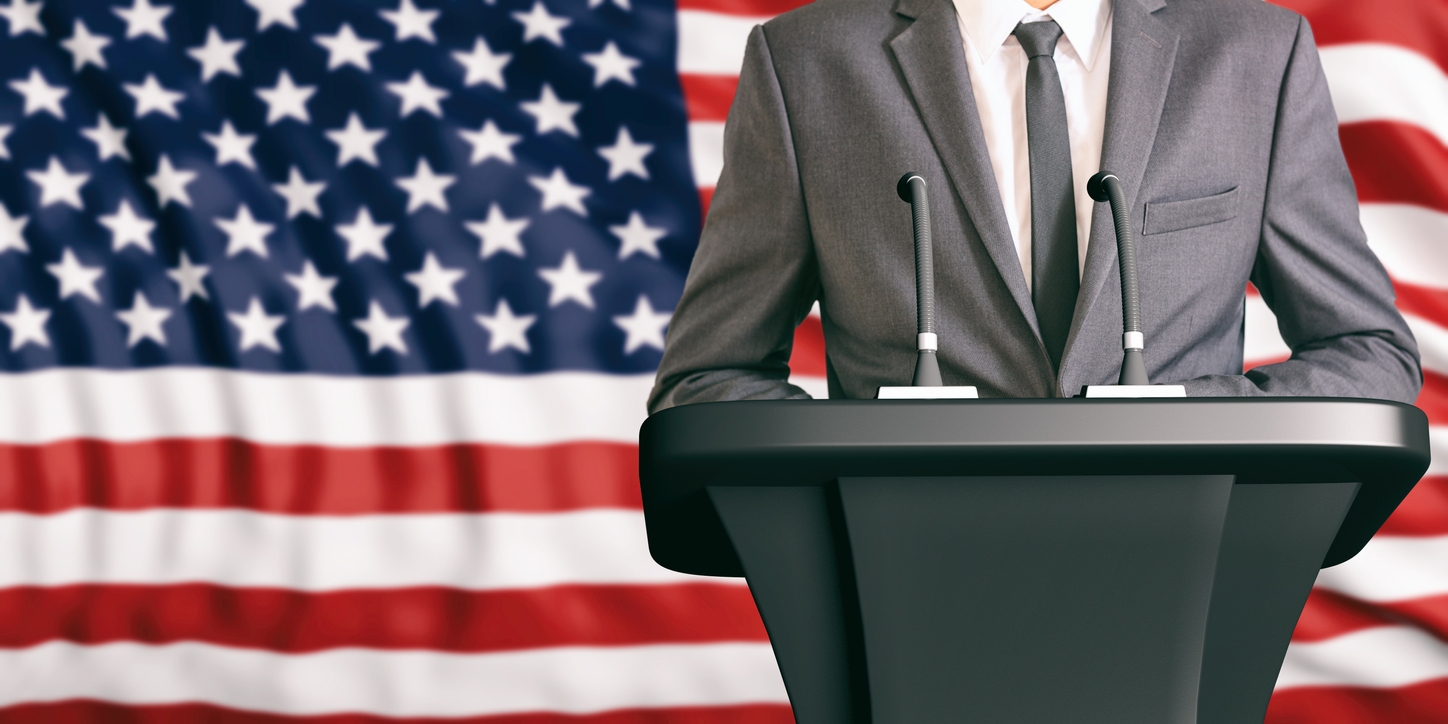
speaker with the American flag as a background
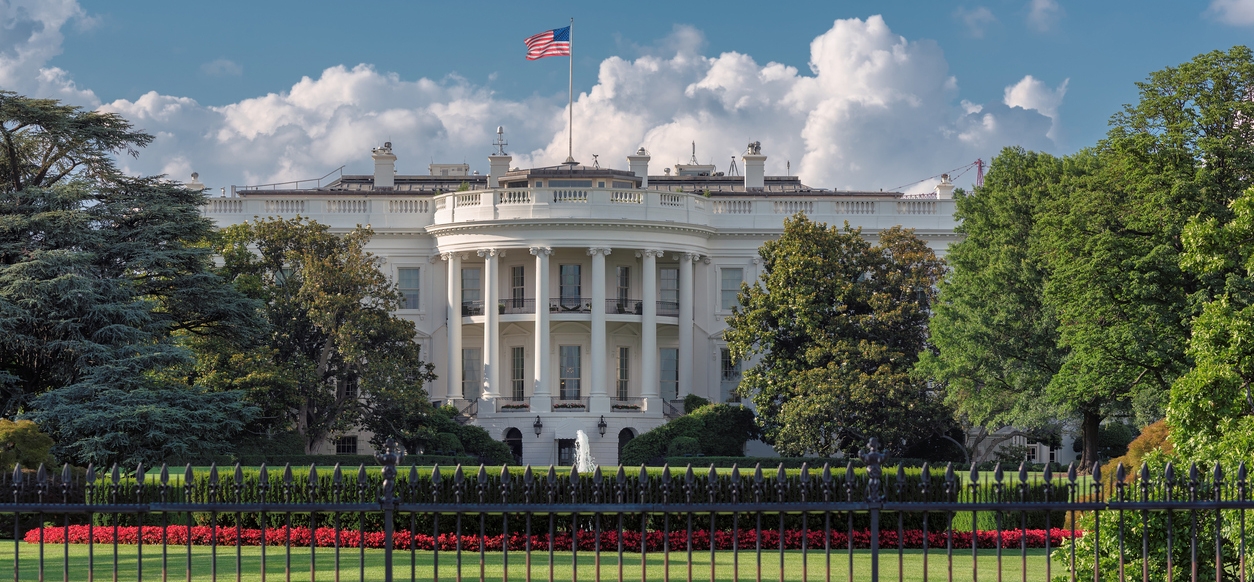
outside the White House
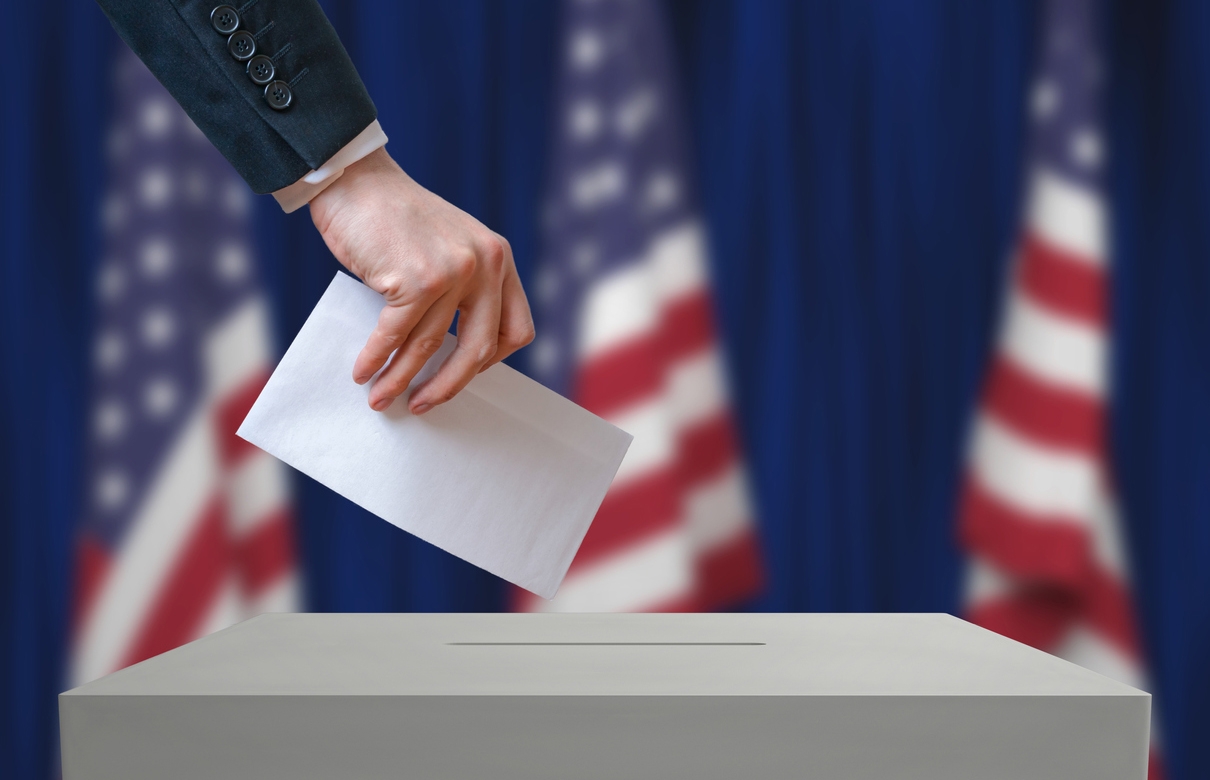
an American voter
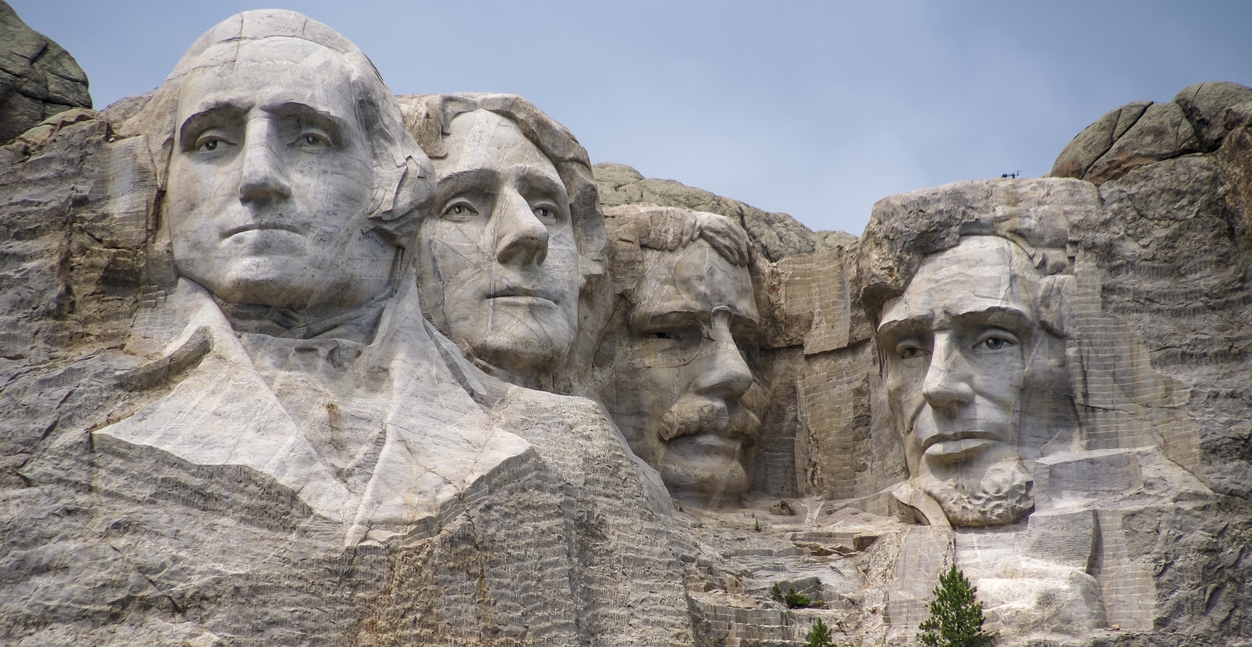
the Mount Rushmore Presidential Sculpture
If you are looking into learning more about the American presidency, you will find a lot of useful information here. In this post, we are going to provide information about the duties of the office of the president, the historical development of the American presidency, how a U.S. president is chosen through the years, and various numerical data and information about the presidents of the United States.
Duties of the Office of the President
The functions, powers, and responsibilities of the president are defined concisely by the Constitution. The chief duty of the president is to ensure that the laws are executed faithfully, and it is done through an elaborate system of executive agencies that involves cabinet-level departments.
The president appoints all cabinet heads and most other high-ranking officials of the executive branch of the federal government. In addition to that, the president also nominates all judges of the federal judiciary, which includes the members of the Supreme Court. However, their appointments to executive and judicial posts should be approved by a majority of the Senate. Usually, the Senate confirms these appointments but may also reject a nominee to whom a majority of members have strong objections.
Aside from those, the president is also the commander in chief of the country’s military. He has unlimited authority to direct the movements of land, sea, and air forces. The president also has the power to make treaties by a two-thirds majority. Lastly, the president has the power to approve or reject the bills passed by Congress. However, Congress can override the veto of the president by summoning a two-thirds majority in favor of the measure.[1]
To sum it all up, here are the following powers that are assigned to the President by the Constitution:
Military Power
A strong military is required to protect the country and its citizens, and this was seen by the founders. They named the President, a civilian, the “commander in chief” of the armed services.
Diplomatic Power
The President has the power to make treaties with foreign nations but with the advice and consent of the Senate. For the treaty to be valid, two-thirds of the senators need to agree to a treaty signed by the President.
Appointment Power
The President is responsible for appointing ambassadors, public ministers, consuls, judges of the Supreme Court, and all other officers of the United States. However, a majority of the Senate still needs to give its advice and consent.
Legislative Power
The President also has the power to veto legislation. Meaning, every bill that passes both houses of Congress needs to be submitted to the President. But Congress may override a presidential veto by a vote of two-thirds of each house. Also, if the President fails to sign the bill in ten days, it still becomes law anyway.[2]
Historical Development of American Presidency
On May 25, 1787, by the time the Constitutional Convention assembled in Philadelphia, wartime and postwar problems had convinced most of the delegates that an energetic national executive was needed. The problem was approached cautiously. However, a third of them agreed on a proposal that would have allowed Congress to choose several single-term executives, each of whom would be subject to recall by state governors. This consumed more debate at the convention than any other. The main points were the method of election and how long the term of the executive will be.
At first, delegates agreed on the idea that the executive should be chosen by Congress. However, this would make the executive dependent on the legislature unless the president was ineligible for reelection, and ineligibility would demand a treacherously long term.
The method of election was debated by the delegates until early September 1787, which was less than two weeks before the convention ended. The Committee on Unfinished Parts, which was chaired by David Brearley of New Jersey, put forward an unwieldy proposal, which was the electoral college, and it overcame all objections. It allowed state legislatures, or the voting public if the legislatures so decided, to pick electors matching in number to the states’ representatives and senators altogether. The electors would vote for two candidates. One should be a resident of another state. The one who received a majority of votes would be elected president, while the runner-up would be vice president. The president would perform his duties in a four-year term and be allowed for continual re-election.[1]
Post-Revolutionary Period
Fundamentally, the presidency is dual in character. It’s because the president serves as both the head of the government and the head of state. Through years of constitutional struggle between the Crown and Parliament, England had separated the two offices, bestowing the prime minister with the function of running the government and leaving the ceremonial responsibilities of leadership to the monarch. Washington was idolized by the American people. He played his part artfully, with a balance between too free an intercourse and too much familiarity.
The administration of Washington was most important for the guides it set. One example was him retiring after two terms, which established a tradition maintained until 1940. In his first term, he made the presidency a full-fledged branch of government instead of a simple office. Also, during the American Revolutionary War, as commander in chief, he had been conventional to surround himself with trusted aides and generals and solicit their opinions.
Washington also set other important precedents, especially when it came to foreign policy. During his Farewell Address in 1796, he cautioned his successors to avoid permanent alliances with any portion of the foreign world, and as well as to not tangle peace and prosperity in the toils of European ambition, interest, humor, rivalship, or caprice. These warnings laid the foundation for the isolationist foreign policy of America, which lasted through most of the history of the country before World War II.
The emergence of the party system also led to unanticipated problems when it comes to electing the president. An example was in 1796 when John Adams, the candidate of the Federalist Party, won the presidency and Thomas Jefferson from the Democratic-Republican Party won the vice presidency. Instead of working together, Jefferson sought to undermine the administration. That’s why beginning in 1804, electors were required to cast separate ballots for the president and the vice president.
19th Century
Jefferson also shaped the presidency in the United States as much as did Washington. He changed the style of the office, receiving foreign ministers in run-down slippers and frayed jackets. He ignored display, protocol, and splendor. There were no public balls or celebrations on his birthday during his presidency.
He refined the presidency and made it a symbol of the people by completing the transition to republicanism. He also talked persuasively about the virtue of limiting government. Jefferson slashed the army and navy, and he reduced the public debt. He also ended what he called the “monarchical” practice of addressing Congress in person. He was able to manage legislation more effectively compared to any other president of the 19th century.
From the departure of Jefferson until the end of the century, the presidency was seen as an essentially passive institution. There were only three presidents during that long period that acted with great energy, and each of them caused a fervent congressional reaction. They were Andrew Jackson, James K. Polk, and Abraham Lincoln.
The use of national conventions instead of congressional assemblies to nominate presidential candidates contributed to the weakness of the presidency after 1824. This new system was made mainly as a means of conquering national elections and dividing the spoils of victory, and the utmost function of the president became the distribution of government jobs.
20th Century
The powers and authorities of the presidency were transformed in the 20th century. President Theodore Roosevelt viewed the presidency as a “bully pulpit” from which to address morals and rally his citizens against scoundrels of great wealth. He also got a generous fund from Congress for railroad travel to put his platform on wheels.
Roosevelt’s example was followed by other presidents with different results. Woodrow Wilson led the United States into World War I to make the world safe for democracy. However, he failed to win congressional approval for American membership in the League of Nations. Franklin Roosevelt was the first American president to use radio effectively, and he also raised America’s morale during the Great Depression dramatically. Ronal Reagan, on the other hand, was known as the “Great Communicator.” He had televised addresses and other appearances to restore the self-confidence of the nation and commit it to struggle against the Soviet Union, which he called an “evil empire.”
One of the challenges faced by the presidents starting in the late 20th century was the lack of reliable sources of information. Every person or group that is seeking the attention of the president had special interests to plead, and misinformation and disinformation were widespread. The expensive presidential campaigns and the subsequent increase in the influence of special interest groups were also other problems, which resulted from the proliferation of presidential primaries after 1968.
At the beginning of the 21st century, presidential power was institutionally bogged down by congressional amendments and the evolving relationship between the presidency and other institutional and non-institutional actors. The presidency had become vulnerable as a result of scandals and impeachment during the second term of Bill Clinton. It also seemed to weaken even further by the controversy surrounding the 2000 presidential election wherein Republican George W. Bush lost the popular vote but overthrew Vice President Al Gore, the Democratic candidate, in the electoral college after the U.S. Supreme Court ordered a pause to the manual recounting of disputed ballots in Florida.
When Bush became president, there were many events that followed, including the September 11 attacks of 2001, which horrified Americans. The following presidential election campaign of 2004 was marked by an intense bitterness between the supporters of Bush and opponents that continued after his reelection.
The Modern Nomination Process for American Presidency
There are a few constitutional requirements for the office of the presidency. Presidents should be:
- Natural-born citizens
- At least 35 years of age
- A resident of the United States for at least 14 years
Successful presidential candidates usually have followed one of two paths to the White House. One is from prior elected office as some four-fifths of presidents have been members of the U.S. Congress or state governors. The other path is from distinguished service in the military, just like Washington, Jackson, and Dwight D. Eisenhower.
Deciding to run for president is usually a difficult one. It’s because the candidates and their families need to endure intensive scrutiny of their private and public lives by the news media. Before they officially enter the race, the probable candidates usually organize a descriptive committee to evaluate their political capability. They also travel around the country to raise money and to create support and favorable media exposure. That is why those who ultimately decide to run have been referred to by scholars as risk-takers who are very confident in their ability to encourage the public and handle the severities of the office they seek.[1]
To be able to become a presidential nominee, a candidate needs to win a majority of delegates. This happens through the party’s primaries and caucuses. It will then be confirmed through a vote of the delegates at the national convention. However, if no candidate gets the majority of a party’s delegates, the convention delegates will choose the nominee. This will happen through additional rounds of voting.
Types of Delegates at a National Convention
In a national convention, there are two types of delegates:
- Pledged or bound delegates: These must support the candidate they were awarded to through the primary or caucus process.
- Unpledged delegates or superdelegates: These can support any presidential candidate they wish.
There are rare cases wherein none of the party’s candidates has a majority of delegates going into the convention. When this happens, the convention is considered contested. With this, the delegates need to pick their presidential nominee through one or more rounds of voting. The balloting will continue until one candidate receives the needed majority to win the nomination. At the convention, the presidential nominee will then announce his or her selection of a vice presidential running mate.[3]
Presidents of the United States
Below is a chart that contains the list of the presidents of the United States:
Presidents of the United States | ||||
No. | President | Birthplace | Political Party | Term |
1 | George Washington | Virginia | Federalist | 1789-1797 |
2 | John Adams | Massachusetts | Federalist | 1797-1801 |
3 | Thomas Jefferson | Virginia | Democratic-Republican | 1801-1809 |
4 | James Madison | Virginia | Democratic-Republican | 1809-1817 |
5 | James Monroe | Virginia | Democratic-Republican | 1817-1825 |
6 | John Quincy Adams | Massachusetts | National Republican | 1825-1829 |
7 | Andrew Jackson | South Carolina | Democratic | 1829-1837 |
8 | Martin Van Buren | New York | Democratic | 1837-1841 |
9 | William Henry Harrison | Virginia | Whig | 1841 (died in office) |
10 | John Tyler | Virginia | Whig | 1841-1845 |
11 | James K. Polk | North Carolina | Democratic | 1845-1849 |
12 | Zachary Taylor | Virginia | Whig | 1849-1850 (died in office) |
13 | Millard Fillmore | New York | Whig | 1850-1853 |
14 | Franklin Pierce | New Hampshire | Democratic | 1853-1857 |
15 | James Buchanan | Pennsylvania | Democratic | 1857-1861 |
16 | Abraham Lincoln | Kentucky | Republican | 1861-1865 (died in office) |
17 | Andrew Johnson | North Carolina | Democratic (Union) | 1865-1869 |
18 | Ulysses S. Grant | Ohio | Republican | 1869-1877 |
19 | Rutherford B. Hayes | Ohio | Republican | 1877-1881 |
20 | James A. Garfield | Ohio | Republican | 1881 (died in office) |
21 | Chester A. Arthur | Vermont | Republican | 1881-1885 |
22 | Grover Cleveland | New Jersey | Democratic | 1885-1889 |
23 | Benjamin Harrison | Ohio | Republican | 1889-1893 |
24 | Grover Cleveland | New Jersey | Democratic | 1893-1897 |
25 | William McKinley | Ohio | Republican | 1897-1901 (died in office) |
26 | Theodore Roosevelt | New York | Republican | 1901-1909 |
27 | William Howard Taft | Ohio | Republican | 1909-1913 |
28 | Woodrow Wilson | Virginia | Democratic | 1913-1921 |
29 | Warren G. Harding | Ohio | Republican | 1921-1923 (died in office) |
30 | Calvin Coolidge | Vermont | Republican | 1923-1929 |
31 | Herbert Hoover | Iowa | Republican | 1929-1933 |
32 | Franklin D. Roosevelt | New York | Democratic | 1933-1945 (died in office) |
33 | Harry S. Truman | Missouri | Democratic | 1945-1953 |
34 | Dwight D. Eisenhower | Texas | Republican | 1953-1961 |
35 | John F. Kennedy | Massachusetts | Democratic | 1961-1963 (died in office) |
36 | Lyndon B. Johnson | Texas | Democratic | 1963-1969 |
37 | Richard M. Nixon | California | Republican | 1969-1974 (resigned from office) |
38 | Gerald R. Ford | Nebraska | Republican | 1974-1977 |
39 | Jimmy Carter | Georgia | Democratic | 1977-1981 |
40 | Ronald Reagan | Illinois | Republican | 1981-1989 |
41 | George Bush | Massachusetts | Republican | 1989-1993 |
42 | Bill Clinton | Arkansas | Democratic | 1993-2001 |
43 | George W. Bush | Connecticut | Republican | 2001-2009 |
44 | Barack Obama | Hawaii | Democratic | 2009-2017 |
45 | Donald Trump | New York | Republican | 2017-2021 |
46 | Joe Biden | Pennsylvania | Democratic | 2021-present |
The president of the United States is arguably the most powerful government official in the world. He or she is elected to a four-year term through an electoral college system. Since the 22nd amendment was adopted in 1951, the American presidency has been limited to a maximum of two terms.
One-Term US Presidents
Throughout American history, about a dozen one-term presidents who ran for reelection have been denied by voters. Considering the complexity of the congressional legislative process, it can be difficult for a president to enact real, visible changes or programs in just four years. Below is a list of the one-term presidents in the history of the United States:
Based on The Washington Post, there were 45 commanders-in-chief who served before Biden, and 10 of them ran again for the nation’s highest office but were unable to secure a second term. The list above is the nation’s one-term leaders who were unable to leverage to their incumbent advantage.
Two-Term US Presidents
There are also US Presidents who served two full terms in office. Here they are:
Among these two-term US presidents, one served two full terms in office non-consecutively, which is Grover Cleveland. He served from 1885 to 1889 for his first full term, then won again and served another full term from 1893 to 1897. Since 1900, there have been 6 democratic presidents who have won a second term in office. Nine presidents on this list changed their vice presidents between their first and second terms.[6]
Other Important Numbers About US Presidents
Here are some of the other important numbers that you may take note of about the presidents of the United States:
Interesting Facts About American Presidents
If you want to learn more about the presidents of the United States, read on as we’re giving you some of the most interesting facts about them:
- George Washington, contrary to popular belief, did not have wooden teeth. His dentures were made of human and cow teeth, ivory, and metal. He was just fond of very dark wines, which may have stained his dentures and gave his teeth the appearance of being wooden.
- James Madison, the fourth president of the United States, was believed to be the shortest president. He was only 5’4” and weighed about 100 pounds.
- Did you know that Andrew Jackson hated paper money? Back then, he only trusted silver and gold. In fact, he partially shut down the Second Bank of the United States due to his ability to manipulate paper money.
- Did you know that William Henry Harrison had the shortest presidency in history? He lasted only a month as he was believed to have fallen ill with pneumonia, but it was later theorized that he may have also been suffering from deadly septic shock.
- During the term of James K. Pol, his devout Presbyterian wife banned dancing, card games, and drinking in the White House during her time as the first lady, which made a very dull presidency.
- Zachary Taylor, back in 1848, did not have any idea that the Whig party chose him as their nomination for president. It’s because the party sent him a letter without postage. When he refused to pay for it, he ended up going weeks not knowing about the good news.
- Andrew Johnson did not come from an elite background. When he was a child, his mother sent him to work as an indentured servant. He later escaped but never had a formal education. He learned to read and write with the help of his wife, Eliza.
- Benjamin Harrison was the first occupant of the White House with electricity. Since it was a new technology back then, he and his wife left the lights on all day and night as they were afraid of being electrocuted by the switch.
- Woodrow Wilson was the first president to give an address via broadcast radio. In his speech, he honored the anniversary of Armistice Day and outlined a vision for America.
- The whole salary of JFK was donated to charity. He made more than enough money via his family’s trusts. That’s why he did not need the income.
- Lyndon B. Johnson was the only president to be sworn in on an airplane when he took the oath of office shortly after the assassination of Kennedy. Another notable fact was Jackie Kennedy stood by his side for the swearing-in, with blood still on her coat.
- Richard Nixon is very talented. He knew how to play many instruments and was an avid bowler, too.
- After leaving office, Jimmy Carter won a Nobel Peace Prize. He also built homes for needy families and wrote more than 24 books.
- Bill Clinton won Grammys in 2003 and 2004 for spoken word albums. He’s one of the three presidents to win a Grammy, along with Barack Obama and Jimmy Carter.
- Before becoming president, Barack Obama worked a summer job at Baskin-Robbins.
References
[1] Levy, M. (2021, October 28). Presidency of the United States of America. Encyclopædia Britannica. Retrieved January 4, 2022, from https://www.britannica.com/topic/presidency-of-the-United-States-of-America
[2] Editors, U. S. H. (2021). The evolution of the presidency. ushistory.org. Retrieved January 4, 2022, from https://www.ushistory.org/gov/7a.asp
[3] USAGov, E. (2021, July 28). Presidential election process. USAGov. Retrieved January 5, 2022, from https://www.usa.gov/election
[4] Murse, T. (2020, November 18). The 10 one-term presidents of the United States. ThoughtCo. Retrieved January 5, 2022, from https://www.thoughtco.com/one-term-us-presidents-3322257
[5] Alpert, G. (2021, December 20). Presidents who didn’t win a second term. Investopedia. Retrieved January 5, 2022, from https://www.investopedia.com/financial-edge/0812/5-presidents-who-couldnt-secure-a-second-term.aspx
[6] Stark, C. (2012, November 9). By the numbers: Second term presidents – cnnpolitics. CNN. Retrieved January 5, 2022, from https://edition.cnn.com/2012/11/09/politics/btn-second-term-presidents/index.html
[7] Ballard, J. (2020, February 10). 44 fun facts about each president just in time for president’s day. Good Housekeeping. Retrieved January 5, 2022, from https://www.goodhousekeeping.com/life/g5126/president-facts/

